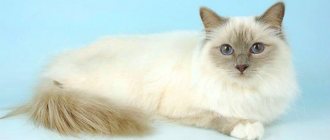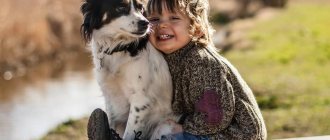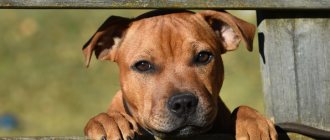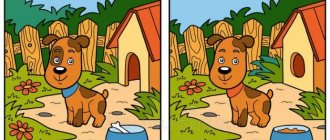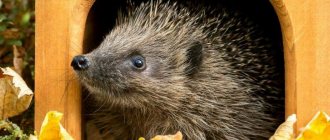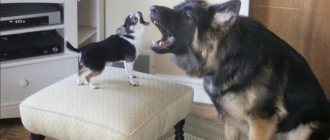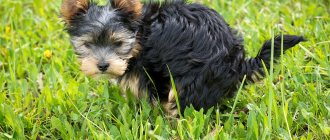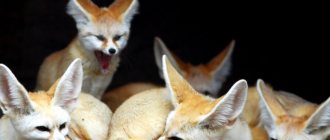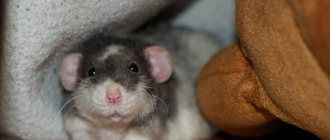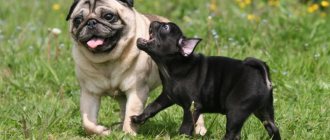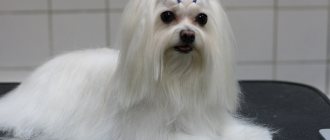What are rodents?
Of all mammals, the order of rodents is the most numerous. They live on almost all continents of our planet. They are absent only in Antarctica and on some oceanic islands.
Animals can differ from each other in every possible way in size, color, shape of the head and other parts of the body, as well as the thickness of the fur. The main common difference for all types of rodents is a pair of large long incisors at the bottom and top. These teeth grow throughout life, gradually grinding down on solid food. Another characteristic feature is diastema - the gap (in place of fangs) between the incisors and the remaining teeth.
Animals inhabit steppes and forests, mountainous areas, river valleys and deserts. They can lead an underground and semi-aquatic lifestyle, and some have even mastered the air (flying squirrels). Rodents feed mainly on plant foods, but some species eat insects, worms, small vertebrates and other animals.
Types of rodents
The development of various ecosystems also influenced the diversity of animal characteristics. Now about 2277 of their varieties are known to humanity. Digging and underground-dwelling species have a round, ridged body shape and developed claws (mole rats). Mobile rodents, especially those that move by jumping, have a more muscular body and long, strong limbs (jerboas, jumpers, gerbils).
The sizes of these mammals range on average from 5-6 to 50 centimeters. Among the smallest rodents are the Balochistan jerboa, the northern dwarf hamster, and the little shrew. Their sizes start from 3-3.5 cm.
Large rodents are porcupines, beavers, cane rats, bristly rats, and hutias with sizes of 50-100 cm. The largest representative of the order is considered to be the capybara. The animal reaches a length of 1 to 1.3 meters and a height of up to 60 cm.
How to care for pet rodents?
Naturally, each animal needs its own living conditions, but it’s worth starting with:
- It is necessary to take into account the individual characteristics of the rodent;
- It is necessary to buy a cage of a suitable size, so as not to rehome the animal later and not cause stress to its body;
- Choose the right food that suits your pet;
- Take care of your health, do not cause pain.
Signs of the disease may include:
- Skin spots and baldness;
- Lack of appetite;
- Aggression;
- Weight loss.
To avoid serious consequences, you should contact your veterinarian.
- Clean the cage regularly;
- Place the food bowl further from the chosen toilet area.
Air temperature and humidity
According to experts, a comfortable temperature for rodents is 19-25 degrees. It is forbidden to install the cage with a battery or in a draft. Optimum humidity 55 – 60%.
Nutrition
- The diet must be followed; if you are supposed to feed once, then that’s what you need;
- Feed should be given at the same time;
- Do not indulge in treats, once a day is enough.
Housing requirements
- Housing should be spacious;
- Have a well-closed lid to avoid loss;
- The cage must be strong;
- Install filler (paper, sawdust, shavings);
- The cage must be installed in one place, without drafts.
Interaction with people
For humans, rodents can be both extremely useful and dangerous animals. They carry leptospirosis, salmonellosis, toxoplasmosis and other infections. Their exposure to the plague was a real disaster for the inhabitants of medieval cities.
Despite this, various types of rodents often served as a source of food and materials for clothing. So, squirrels, badgers, chipmunks, and chinchillas have always been hunted for their fur. Due to their small size, unpretentiousness and ability to reproduce quickly, the animals are used for scientific research and experiments.
Some rodents have also learned to benefit from human presence. Mice and rats became synanthropes - species that accompany people. They settle near human settlements, taking advantage of all the advantages of such proximity.
Some representatives of the detachment captivated us with their appearance so much that we decided to shelter them. This is how domestic rodents appeared: mice, hamsters, rats, degus, chinchillas, pigs, gerbils. Some even tame squirrels and jerboas. Most of these animals do not live long - from 2 to 7 years. A real long-liver among domestic rodents is the chinchilla. She lives up to 20 years.
Rodent in the house: is it worth getting a pet?
When deciding to get a pet rodent, you need to carefully weigh the pros and cons of such a step.
Advantages
- Pleasant appearance: soft fur, expressive eyes, small paws.
- Unpretentiousness: pet rodents do not require a lot of space and private walks.
- Cost-effective: relatively inexpensive (compared to buying a purebred dog or cat), food is affordable and is consumed slowly.
- Convenience: Most pet rodents make quiet sounds and do not interfere with work or sleep.
- Variety of breeds and colors. You can take part in exhibitions with some rodents and engage in commercial breeding.
Flaws
- Low life expectancy. Many rodents live only 2-3 years. Exceptions: guinea pigs (6-8 years), chipmunks (10 or more years), rabbits and chinchillas (about 15).
- The need to sharpen due to their constant growth. To do this, pets are given mineral stones and tree branches, but the rodents can get into cables, interior items, clothes and shoes of the owner.
- Specific smell of excrement, need for frequent cleaning.
- Fragility of most representatives, timidity.
Chipmunks
The chipmunk rodent belongs to the squirrel family. They differ from other members of the family by five dark stripes on the back. Almost all 25 species of these rodents inhabit exclusively North America. Outside its borders, only the Asian or Siberian chipmunk lives. Distributed from the taiga regions of Eurasia (including the Russian Far East, the Kamchatka Peninsula, the islands of Hokkaido and Sakhalin) to China.
These are small rodents up to 15 centimeters in length. They are densely covered with brown or red-brown fur. On the back, black stripes alternate with gray or white. The tail of chipmunks is fluffy and grows almost the size of the owner (up to 12 cm).
Chipmunks are not aggressive and can quickly get used to humans. They are excellent tree climbers, which often saves them from terrestrial predators and helps them search for food. But they arrange housing underground. The burrow can be up to three meters in length and is necessarily equipped with “pantries” for storing food.
Like hamsters, chipmunks have cheek pouches in which they carry food. They are active only during the day. During the winter, animals hibernate, curled up in a ball. In cold and rainy weather in the summer, they also wait in burrows, eating the reserves they have made.
Small rodents
Hamsters
Hamsters are very popular pet rodents. But it is worth keeping in mind that this small and cute animal is a nocturnal animal and, moreover, quite aggressive. During the day, the hamster will sleep soundly and will not want to play with you. And if you decide to add a relative to it, then violent showdowns, up to the death of one of the animals, will be ensured.
To tame a hamster, you need to show persistence and patience. Otherwise, this cute animal may show its teeth and bite its owner painfully.
The hamster will need a durable wire cage, equipped with a house, wheel, and tunnels of your choice. If you want to let your pet run around the apartment, then use a walking ball, otherwise the hamster may climb into a hard-to-reach place, chew wiring or other things.
This domestic rodent is not very picky when it comes to food. The main thing is to adhere to some rules. You can find out what to feed your hamster here. The hamster eats little, takes up little space, and requires minimal attention. This pet rodent will thrive alone in its cage. The main thing is not to forget to feed him and change his water on time. The only drawback of these animals is their short life expectancy, on average 2-3 years.
The most common representatives of hamsters are the dwarf hamster and the Syrian hamster. Read about what types of domestic hamsters exist in our article.
Mice
For many centuries, these small creatures have lived next to humans. And, the attitude towards such rodents, and we will talk about them, is very ambiguous. On the one hand, rodents harm and spoil products, and on the other hand, imagine at least one medical and research laboratory in which laboratory rats and mice would not live. And, since these creatures can live in laboratories, then why can’t they live in our homes as pets?
Relatives of ordinary house mice today are decorative mice. It’s just that if the first ones are destroyed, then the second ones are groomed and tender. Of course, such a house mouse is an excellent candidate for the role of a pet if you have limited living space and free time. But who should not have decorative mice are those who are pathologically afraid of these creatures, or cannot stand the specific mouse smell (no matter how you clean and wash the cage, the smell will still be in the air), as well as those who suffer allergy to rodents.
What are the peculiarities of keeping such pet mice, what to feed such rodents, and how to care for them? We will try to answer all these questions in our article.
Rats
Most of us shudder at the words “house rats”: we immediately think of rather large rodent pests that can not only cause damage to property, but also infect them with diseases.
But in fact, these animals can be very interesting pets.
There are different breeds of rats, but absolutely all of them are distinguished by their amazing intelligence, speed of learning and even good training abilities. Let's get to know them from this side. And at the same time we will learn how to care for a pet rat.
Guinea pigs
Guinea pig (from Latin cavia porcellus - small pig) is a domesticated rodent of the pig family, which belongs to the genus pig. The animal is a small, usually up to one and a half kilograms, plump animal with hanging ears, large protruding eyes and a wide muzzle. The enormous popularity of the rodent is due to its attractive appearance, unpretentiousness, good-natured and trusting character and peaceful temperament. The Guinea pig is the safest pet for children of primary preschool age.
The rodent received its name, which at first sounded like “overseas pig,” in Russia precisely because it arrived from overseas, and the shape of the animal’s head resembled the head of a pig. The animal is also called kewi, cavey or Guinea pig.
Squirrels
The common squirrel, or otherwise known as the squirrel, belongs to rodents from the squirrel family. There are about 15 species of animal that live in wildlife in forests.
The animal is small in size, nimble and easy to climb. Its weight is approximately a quarter kg, length - from 20 to 28 cm. The longest part - the tail - is equal to a third of the entire body.
Veksha changes her fur clothes in the off-season. In winter, its fur becomes fluffier and softer, and in summer it becomes shorter and tougher.
The squirrel is one of the most beautiful forest inhabitants that humans have managed to tame and domesticate. An example of grace and correct proportions. The owner of a fluffy tail, shiny black eyes and fluffy tassels on the ears.
This is a spontaneous and active animal, and, in addition, unpretentious in its content.
Chipmunks
Everyone knows the cartoon “Chip and Dale Rescue Rangers” and is moved by its main characters, but you can give a child a great gift by buying real live chipmunks as pets.
The chipmunk adapts well to life in captivity; it is unpretentious in both care and food.
The only difference from the cartoon characters is that they do not get along well with each other from autumn to spring, and each animal will need an individual cage.
Adult size varies depending on the specific species. The smallest representative is 5 centimeters in length and weighs 30 grams, and the largest is 15 centimeters in length and about 130 grams in weight. A distinctive feature of all chipmunks is the longitudinal stripes on the back, which alternate in color. Usually there are 9 of them, of which 5 are dark and 4 are light.
Degu
Degus are small animals that look like a jerboa. Along with other exotics, they are rapidly gaining popularity among those who want to have an unusual pet.
Degu is a small South American rodent. Other common names for this animal include two: bush rat and Chilean squirrel. The animal is highly active with a relatively small size. An adult reaches up to 30 cm in length, while weighing only 200-300 g. In nature, degus come in only two colors: brown-yellow or chestnut-gray.
The fur of the Chilean squirrel is hard and dense. Like most rodents, these animals have 8 pairs of teeth that grow throughout their lives. Degus can adapt to living at home if they are provided with the appropriate conditions. With proper care and nutrition, such a pet can live up to 6-8 years.
Gerbil
When choosing a pet, people often stop near cages with gerbils. These rodents have wonderful personalities. They are clean, easy to tame, trainable and look very cute.
Their curiosity and friendliness will delight you every day. Just by looking at the photo of a gerbil, all doubts about the decision to have one as a pet disappear.
Today there are more than 100 species of these rodents. It is worth noting that only one of them was tamed. This is a Mongolian gerbil.
In their natural environment, these mice live in families. Therefore, if you decide to have this baby at home, you need to take a couple of individuals. Living alone could have a negative impact on her health.
The size of a gerbil mouse varies from 5 to 20 cm. It weighs from 15 to 200 grams. The main distinguishing feature is the tail. It is covered with fluff along its entire length, and the tip is decorated with a tassel. The coat color is sand.
Sonya
Under natural conditions, the rodent dormouse prefers wooded areas, preferably oak, wild fruit trees or beech. He feeds on the fruits of these trees, and makes a cozy home in their hollows. It does not evoke sympathy among southern farmers, as it harms the grape industry.
There are several types of them, but they are divided into two groups - terrestrial and arboreal. The arboreal ones resemble small squirrels, while the terrestrial ones are more like mice. All species adapt well to life in captivity, but there is an important requirement - frequent cleaning of the cage is necessary. Although these animals are small, they quickly pollute the home, causing unpleasant odors.
Jerboa
Jerboas are a group of mouse-like rodents, of which more than 25 species are known. Their body shape, ease of maintenance and small size make them attractive as pets to many animal lovers.
This animal has a small body size, a fairly long tail with a brush at the end, and large hind legs. Thanks to its fur, the jerboa is protected from various temperature changes typical of desert areas.
The animal, in comparison with other representatives of rodents, has a fairly large size of 25-26 cm and a tail, the length of which is 30 cm. The fur on the back has a red or brownish-gray tint, on the cheeks the color is slightly lighter, the neck and belly are white. The head of the jerboa is round in shape with oval ears and fairly large eyes. He also has small front legs and strong hind legs. The weight of the animal, depending on its type, can reach 250-300 grams.
In natural conditions, jerboas move a lot, and, consequently, the lack of movement and a small amount of free space can develop in a domestic jerboa such a disease as physical inactivity, which will lead to its early death. To avoid this outcome, you should provide your pet with a large enclosure, the size of which will be at least 0.5 m.
Mice and rats
Mice or Muridae are a huge family that includes about 400 species and several hundred genera. This includes the genus of rats. Mice are usually small, up to 10-15 centimeters in size. Rats are larger and can grow up to 50 centimeters in length.
These are nocturnal omnivores. Basically, they lead a semi-terrestrial lifestyle: they hunt on the surface and build burrows underground. Animals prefer subtropical and tropical areas, but live almost everywhere. They were brought by humans even to remote islands.
Mice have smoother and more rounded features and larger ears. Rats, on the contrary, have small ears, an elongated silhouette, and a pointed muzzle. They are larger and more aggressive than their counterparts. Mice are very timid and try to avoid unnecessary encounters; rats do not always run away and are capable of attacking the enemy.
All members of the family have calluses on their paws, which help them move along trees and other surfaces. The tails may be almost naked (most rats, grass mice, yellow-throated mice) or covered with hair (black-tailed rats).
The animals themselves are also covered with thick hair. Its color is usually monochromatic or with a small splash of other shades. The color of the animals is predominantly grayish, black, brown or brown. Field mice and baby mice have reddish or yellowish fur.
Prairie and Chinese dogs
A rodent that deserves a separate story. Several years ago it literally amazed Russian gardeners. A new animal suddenly appeared on farmland and cottages, quickly destroying crops. Without understanding its origin at all, summer residents quickly dubbed the rodent a Chinese dog.
It's actually a water vole. The animal belongs to the hamster family. It grows 15-20 cm long, lives near rivers and other bodies of water, destroying fruit, cereals and vegetable crops nearby. The water vole is considered one of the main pests of the economy.
She previously lived in the region of Siberia, Kazakhstan, the Lower Volga region and the North Caucasus. But the rodent received such a strong reaction and a new name relatively recently. By the way, among rodents there are other dogs – prairie dogs. They belong to the squirrel family and live in North America. They prefer arid areas with low bushes.
Prairie dogs are quite large. They reach 35 centimeters in length and weigh about 1.5 kg. In appearance, the animals resemble marmots; they also stand on their hind legs, stretching their bodies upward and pressing their front paws to their chest. They have light fur of gray-brown shades. The tail is white on all except black-tailed dogs and Mexican dogs.
Squirrels
Squirrels are common inhabitants of city parks. They inhabit Europe, temperate Asia, and America. They have a long body and a large bushy tail. The muzzle is vaguely similar to that of a mouse, but more rounded and blunt. The animal's ears are long and pointed, sometimes with fur tassels.
Their strong, muscular legs help them climb trees and jump long distances. An impressive tail is needed for balance. The color of animals ranges from bright red (common squirrel, red-tailed squirrel) and brown (Bolivian) to black and gray (Arizona, Yucatan). In winter, the fur becomes lush and thick, in summer it thins out and becomes short.
Giant squirrels are the largest representatives of the genus. They are almost twice the size of the common squirrel, reaching a length of up to 50 centimeters. The smallest are mouse squirrels. Their size does not exceed 8 centimeters.
Animals inhabit forests because they spend most of their lives in trees. They descend only to search for food and water, and also to hide what they find under a layer of foliage. They feed on both plant and animal foods. They can eat nuts, seeds, mushrooms, as well as frogs, chicks and beetles. In winter, they find food even under a thick layer of snow, tearing apart their own and other people's hiding places.
Angora rabbit
Angora rabbit
These rabbits were imported from Poland. Their colors vary. What’s interesting about rabbits is their “clothing”: up to 30 days, rabbits look like “ugly ducklings”, and by the 50th day they become “beautiful swans”. You should not breed those rabbits that have poor head pubescence. The rabbit must be constantly combed with a brush and cut out the rolled fur.
Interesting: The largest cities in the world - list of locations, area, population, photos and videos
Flying squirrels
Flying squirrels are a subfamily of squirrels. They inhabit the northern regions of Eurasia from the Scandinavian Peninsula to Chukotka, preferring deciduous and mixed forests. Their external outlines are similar to ordinary squirrels, with the exception of some features.
They are nocturnal, so their eyes are much larger. The head of flying squirrels is more rounded, and there are no fur tassels on the ears. On the sides of animals there is a leathery membrane connecting the hind and forelimbs. During jumps, they spread their limbs to the sides, the membrane is stretched, allowing them to glide in the air. So the rodent makes jumps and flights of 50-60 meters.
They are hunted by owls, martens, sables and other predators. The flying squirrels themselves eat plant foods (buds, mushrooms, berries), as well as bird eggs and small chicks. They do not hibernate, but remain indoors during cold weather. Rodents make their homes in tree hollows at high altitudes. When a hollow is found, the squirrel puts moss, leaves, and grass into it, making a round nest. Sometimes she uses abandoned nests of birds or other squirrels.
The flying squirrel is difficult to keep at home, as it needs a lot of space. But in captivity she lives for about 10-13 years, which is twice as long as in natural conditions.
Jerboas
Of all the rodents, only one moves on two limbs - the jerboa. The animal lives in hot areas of the Palaearctic biogeographic region. It inhabits deserts, semi-deserts, and can live in steppes, some forest-steppes and mountains. The jerboa is found in southern Siberia, Kazakhstan, North Africa, China, Western Asia, and Mongolia.
Harsh living conditions affected the lifestyle, and most importantly, the appearance of the rodent. The animal has developed hind legs, the length of which is four times longer than the front legs and twice as long as the body. The jerboa moves in leaps up to three meters long and can reach speeds of up to 50 km/h. When moving slowly, it moves to four paws.
The body of the rodent reaches from 4 to 25 centimeters. It is covered with thick brown or yellowish fur, similar in color to sand. The animals have a large head, short neck, large eyes and long ears. The long-eared jerboa boasts the largest “locators”. The tail is usually longer than the body, and is equipped with a fluffy tassel at the end. It is necessary for balance and turning while jumping.
Jerboas are nocturnal, escaping the heat in their burrows. They build different types of burrows. Some serve as temporary shelter from the sun, others serve as shelter from sudden attacks by predators, and in others they live. Permanent housing is necessarily equipped with emergency passages through which the rodent escapes if its hole is discovered.
Large rodents
Chinchilla
Chinchilla (lat. Chinchilla) belongs to the order Rodents, suborder Porcupines, superfamily Chinchilla-shaped, family Chinchillaidae, genus Chinchilla.
Chinchillas have a round head and a short neck. The body is covered with thick soft hair, and hard hairs grow on the tail. The body length is 22-38 cm, and the tail grows 10-17 cm long. The weight of a chinchilla reaches 700-800 grams, while females are larger and heavier than males.
At night, chinchillas can easily navigate thanks to their huge eyes, which have vertical pupils. The whiskers of mammals grow up to 10 centimeters in length. Chinchilla ears are round in shape and have a length of 5-6 cm. In the ears there is a special membrane with which the chinchilla closes its ears when taking a sand bath.
The chinchilla's skeleton can be compressed in a vertical plane, so the animals can crawl into the smallest crevices. The hind legs of chinchillas are four-toed, and the front legs have 5 toes. The hind limbs are very strong and twice as long as the front ones, which allows mammals to jump high.
The life expectancy of a chinchilla reaches 20 years.
A couple of centuries ago, chinchillas were on the verge of extinction - they were destroyed because of their very valuable fur, but gradually the situation changed for the better for the animal and from the status of a hunting trophy, this rodent migrated into our homes to the status of a pet and everyone's favorite.
But in order for the animal to feel comfortable, healthy and cheerful, it is worth knowing how to properly feed it, what to feed it and is it possible to breed it at home?
Jerzy
The common hedgehog is a very famous mammal, widespread throughout Europe and even on some islands. Its appearance and lifestyle sometimes attract animal lovers who keep a hedgehog as a pet.
It is difficult to confuse a hedgehog with someone else: the entire back of the animal is densely covered with sharp short needles of black-gray color, the length of which is usually 2.5-3 centimeters. The needles stick out in different directions to cause maximum damage to enemies and provide a high degree of protection. The hedgehog's total body length ranges from 20 to 30 centimeters, and it also has a short tail - about 2-3 centimeters.
The weight of an adult animal varies from 600 grams to 1 kg; on the head of the hedgehog there is a long, wet black nose extended forward. It has sharp teeth, the number of which is greater on the upper jaw than on the lower jaw - 20 and 16, respectively.
The hedgehog has four short legs, each with 5 toes and claws. The front legs are 1.5-4 cm shorter than the hind legs. This animal has dense gray fur growing on its belly and between its spines. The needles themselves grow at the speed of wool, have a hollow structure inside and grow in numbers from 4 to 6 thousand pieces.
Rabbits
The decorative rabbit is a very cute creature. First of all, when getting this furry pet, you need to remember that this is not just a beautiful soft toy, but a living creature that needs constant care and attention.
Decorative dwarf rabbits are very cute and funny animals that love communication and attention. Those who got such a pet are convinced that communicating with him brings a lot of joy and good emotions. Caring for dwarf rabbits is easy and more cost effective than caring for a dog or cat.
Rabbits love to walk on grass on lawns, so be sure to purchase a collar and leash. Walking does not need to be done every day; the rabbit masters the tray perfectly and is not capricious. This pet is light and compact, so you can take it with you in a cage to the country house or on other trips. Even a child can carry the cage. But remember that this animal is very sociable and can become stressed from inattention. If it is necessary to leave, the animal can be entrusted to relatives or friends, as it easily tolerates a change of habitat.
Hares
To the surprise of many skeptics, hares are increasingly gaining a place next to people in their homes. With an average lifespan of 5 to 15 years, hares are very sociable, active and cute creatures. It's impossible not to get attached to the big-eared cutie.
There are various reasons why hares have evolved from being a simple source of meat to being one of the best pets in recent years. Here are some of them:
- They are very sociable creatures that do not require any special training;
- They are very playful and funny;
- Being very sociable creatures, they need constant interaction with people and other hares;
- They are willing to play with people and other animals outside of their cage every day.
If you want to have a bunny, then you should know that a lot of work will await you. Along with the arrival of a pet into your home, you have a huge responsibility for it.
Marmots
The marmot is a mammal. Belongs to the order of rodents from the squirrel family. The most common steppe species is also called boibak.
In nature, it lives in the steppe and forest-steppe areas, but also takes root well in captivity. Requires increased attention, but quickly becomes attached to its owners. It is considered the most intelligent of the group of rodents that have adapted to home conditions. Each marmot has a special character and temperament.
Marmots are most often small in size. But among rodents, this is one of the largest species; an adult is about the size of a cat. They can weigh from 5 to 10 kg, with a height of 40 to 50 cm. They wear a fluffy fur coat of a sandy or brownish-reddish hue. They are born without hair and blind, first feed on their mother's milk, then switch to grass.
Gophers
The gopher is an animal of the chordate type, class mammals, order rodents, family squirrels, genus gophers (lat. Spermophilus or Citellus). The Russian word “suslik” comes from the Old Church Slavonic “susati”, which means “to hiss”.
The average body length of an adult animal is 15-25 cm. Individuals of some large gophers grow up to 40 cm, with males always larger and heavier than females. The weight of the gopher ranges from 200 grams to 1.5 kg.
Pet lovers often try to keep these cute-looking gophers indoors. Despite their pleasant appearance, gophers are not suitable for keeping at home. The possibilities of domestication and human contact with it are quite limited. The smell of the excretions of these animals is quite noticeable, which makes keeping them in an apartment difficult.
In the living corners of young naturalists or in scientific institutions, keeping gophers can be of interest, especially if there are observation and experimental programs. They are used primarily as laboratory animals. Thin-toed ground squirrels differ for the better from other species that are poorly accustomed to human society.
Pigs
The guinea pig is one of the most common pets. They originate from South America, namely the Andes region, Colombia, Peru, Bolivia and Ecuador. These are large and shapeless animals ranging in size from 20 to 35 cm. They have no tail, a blunt muzzle and floppy ears.
Guinea pigs living in the wild have thick fur of a light brown or grayish color. Decorative species differ greatly in both colors and coat length. Rodents are peaceful and good-natured, easily tamed by humans. The first to do this were the Indians, who bred them for meat and religious rituals. European traders showed them to the rest of the world, and the animals were called “sea,” that is, overseas.
The pig family also includes maras, mokos and capybaras. They all live in South America, but bear little resemblance to their counterparts. The moko or rock pig has longer legs. She is very active and jumps several meters.
Mara is also called the Patagonian hare. It grows up to 80 cm and really looks like a scythe. The animal runs well and has strong and long hind legs. The muzzle is blunt, and the ears are slightly pointed and stick up.
Capybaras are the largest of the rodents. These include capybaras. They resemble a small ungulate rather than a rodent. These are heavy animals with a blunt muzzle, small rounded ears and an elongated body. They swim and dive well and lead a semi-aquatic lifestyle.
Beavers
Capybaras, although very large, are found only in the Southern Hemisphere. But in the Northern Hemisphere, the largest rodent is the beaver. The animal reaches 1-1.3 meters in length and approximately 35 centimeters in height. His body is massive and stocky, his eyes and ears are small and not very expressive.
For swimming, the paws are equipped with membranes. During a dive, the ears and nostrils close tightly, and the eyes are covered with nictitating membranes. The tail is paddle-shaped - flat and widens towards the end. He serves as the steering wheel. When in danger, the rodent taps it hard on the water, scaring away enemies.
Beavers live near rivers and lakes. In places with steep and steep banks, animals dig deep holes with a lot of passages and labyrinths. If the coast is flat or the area is swampy, then the rodent builds a hut - a floating house made of silt and brushwood. There they live and store food.
The entrance to the house is always in the water, and a dam is built around it. It is a reliable protection against predators, and in winter it simplifies the process of searching for food. In construction, beavers have no equal. The dams are equipped with passages for rodents and a water drainage system. Their shape differs depending on the nature of the flow in the reservoir. The dams sometimes reach several hundred meters; one of the largest (850 meters) was found in the Canadian Wood Buffalo Park.
Beavers feed exclusively on plants. They prefer bark, grass, and acorns. Their hard teeth allow them to grind down trees. During the night, a rodent can knock down a tree with a diameter of 40-50 cm. Their activity begins at dusk and ends in the early morning. In winter, they do not hibernate, but they are in no hurry to leave their homes, eating reserves prepared in the fall.
Decorative mouse
Decorative mouse
These mice quickly adapt to a new place. Mice can live in glass containers or metal cages. The main thing is to protect them from escape. Their “home” should have a running wheel, thanks to which the mouse will get physical exercise.
Interesting: Dangerous animals of Africa - list, names, descriptions, photos and videos
You can put either sawdust, only large ones, in the “house”, or wood filler, which is used for cats. The main “dishes” are oats, millet, wheat, barley, rye. You can also give millet, rolled oats and buckwheat.
Porcupines
Porcupines are the third largest rodent, reaching from 40 to 90 cm. Evolution has turned part of its fur into spines. Thanks to this, the fat and overweight porcupine became practically inaccessible to predators. Its needles seriously injure animals and can make them disabled, incapable of fast and dexterous hunting. Because of this, predators often switch to catching slower prey - humans, which becomes a serious threat to us.
Reliable protection made the rodent fearless. When danger appears, he does not retreat. Shaking its needles, it first warns the enemy, and then attacks him, approaching him with his back. Courage plays a trick on him when the animal tries to attack fast-moving cars.
The porcupine lives in foothills and deserts. It is common in India, the Middle East, Asia Minor, Italy, Transcaucasia and the Arabian Peninsula. It arranges housing in small caves and rock openings or in burrows if the soil allows them to be dug. A rodent's home can be up to 4 meters deep and up to 10 m long. The animal often lives next to humans, feeding on crops from fields and vegetable gardens.
The rodent is nocturnal. It does not hibernate, but in cold weather its activity is greatly reduced. It feeds on tree bark, plant tubers, watermelons, pumpkins, grapes and even cucumbers. Occasionally may eat insects. In the past, animals themselves became food. People caught them for their juicy and tender meat, which is said to be tastier than rabbit.
Is it worth getting a pet rodent?
Any pet should be purchased when you are ready for:
- Costs of food and veterinary care;
- Cleaning the cage yourself and communicating with your pet;
- Damage to clothing, furniture;
- It takes a long time to gain trust, and small bites that can be inflicted on an animal that is not used to it.
And if a child asks his parents for such a gift, then you should understand that he can play with it and throw it away, and you will have to keep an eye on the rodent. On the other hand, maybe the child will get used to taking care of the pet and will become more responsible.
Let's celebrate! Therefore, there is no clear answer to this question. This is the case when it is better to prepare, analyze your capabilities, and only then get an animal.
Advantages and disadvantages
The advantages of keeping rodents at home are:
- These animals absolutely do not remember the pain that the owner and other residents of the house can cause them;
- Not picky about food;
- Silent, their activity is practically inaudible;
- For normal living they need a small cozy place;
- They are amenable to training and do not express aggression when playing with children;
- They do not feel thirsty for a long period when they have eaten juicy foods;
- They reproduce.
Flaws:
- Keeping rodents outside the terrarium is dangerous for the surrounding furniture and clothing, which they can ruin and chew;
- Clean the cage daily, then there will be no unpleasant odor.
The whim of a child is certainly something that needs to be fulfilled, some parents often think so. For this reason, we have a lot of stray dogs and cats on our streets, which at one time were such a fad.
Let's celebrate! If such a responsible decision was made at the family council, then you should properly prepare for such a proximity to a rodent. This is a kind of responsibility that should fall on the shoulders of a child, and sometimes an adult. And if a person is not ready for this, it is worth holding off on getting an animal.
